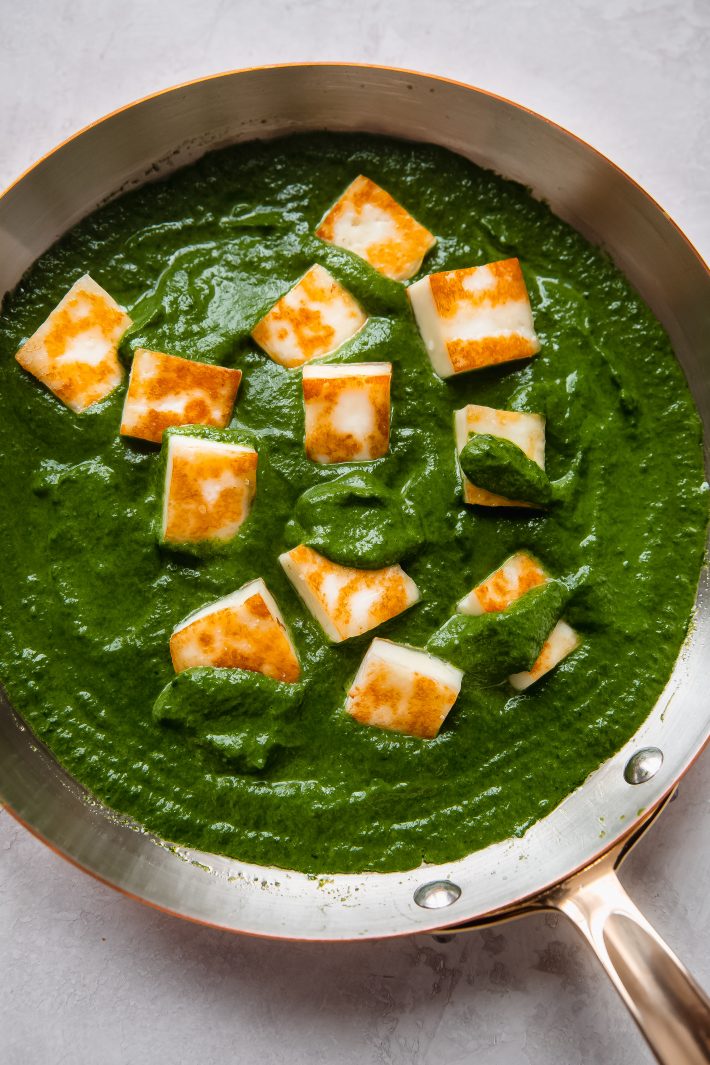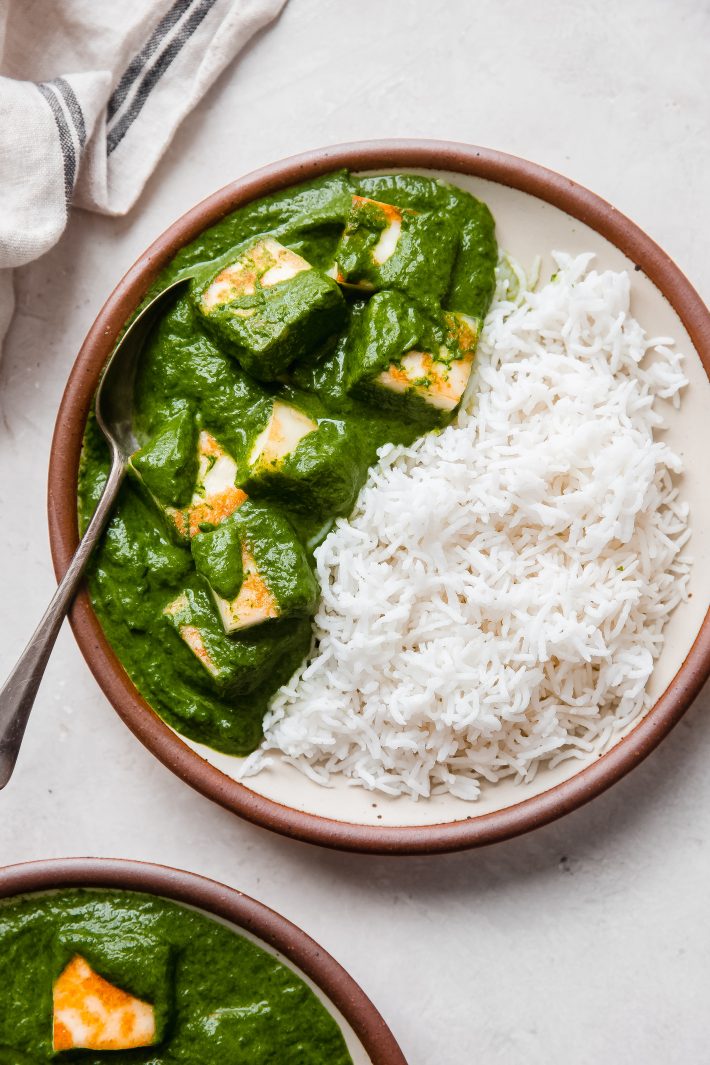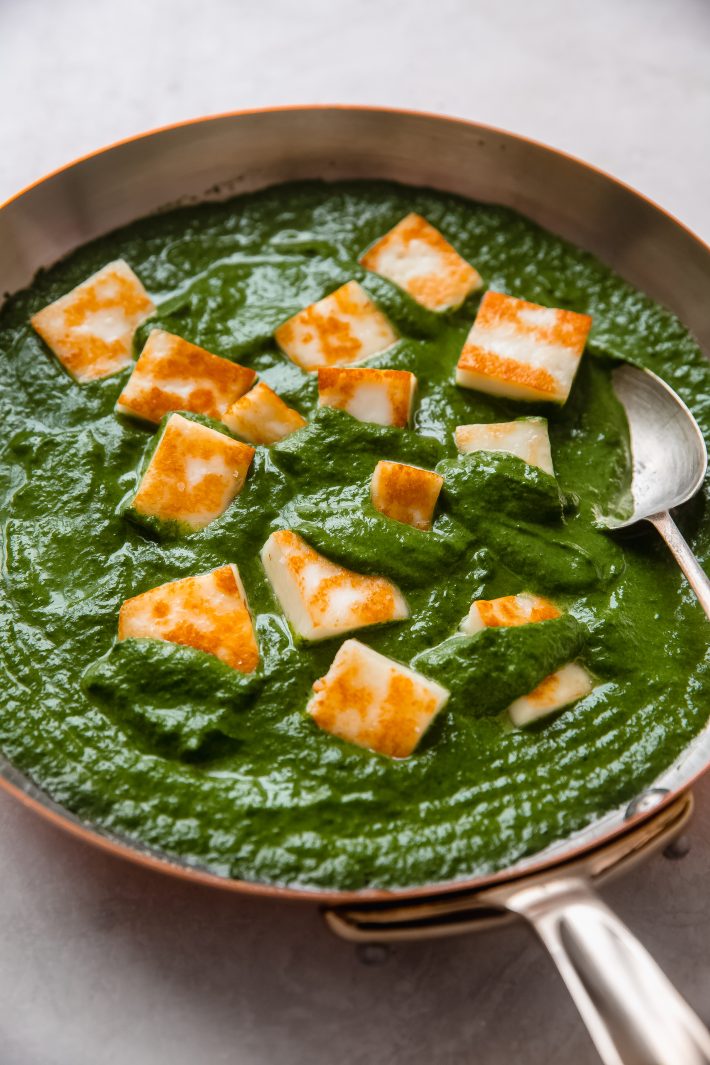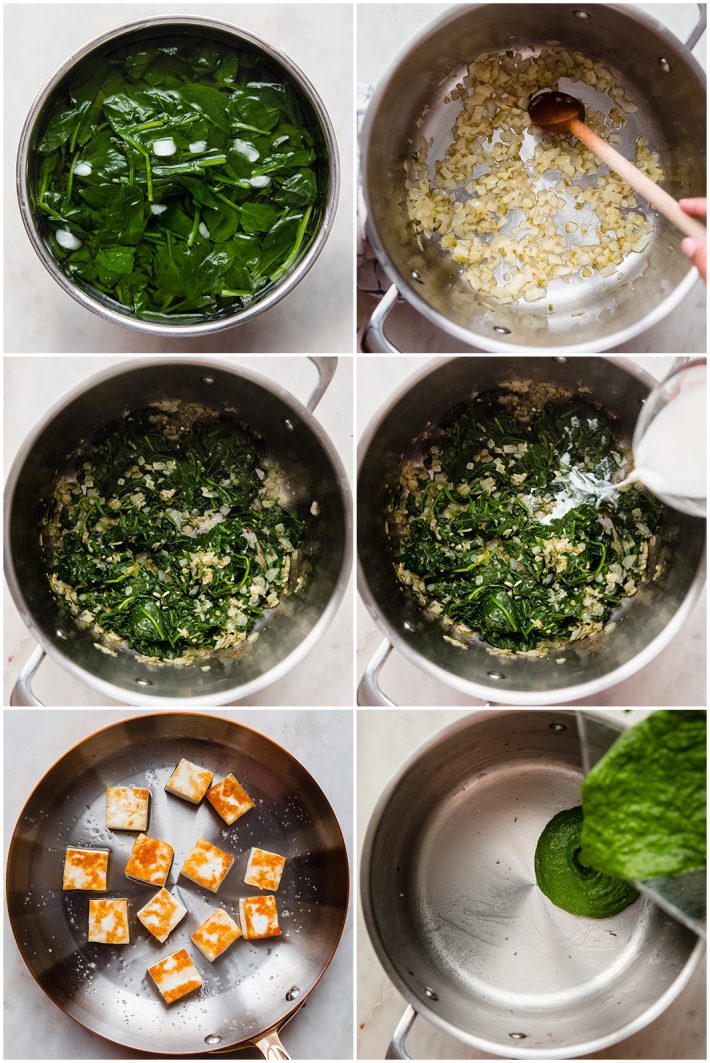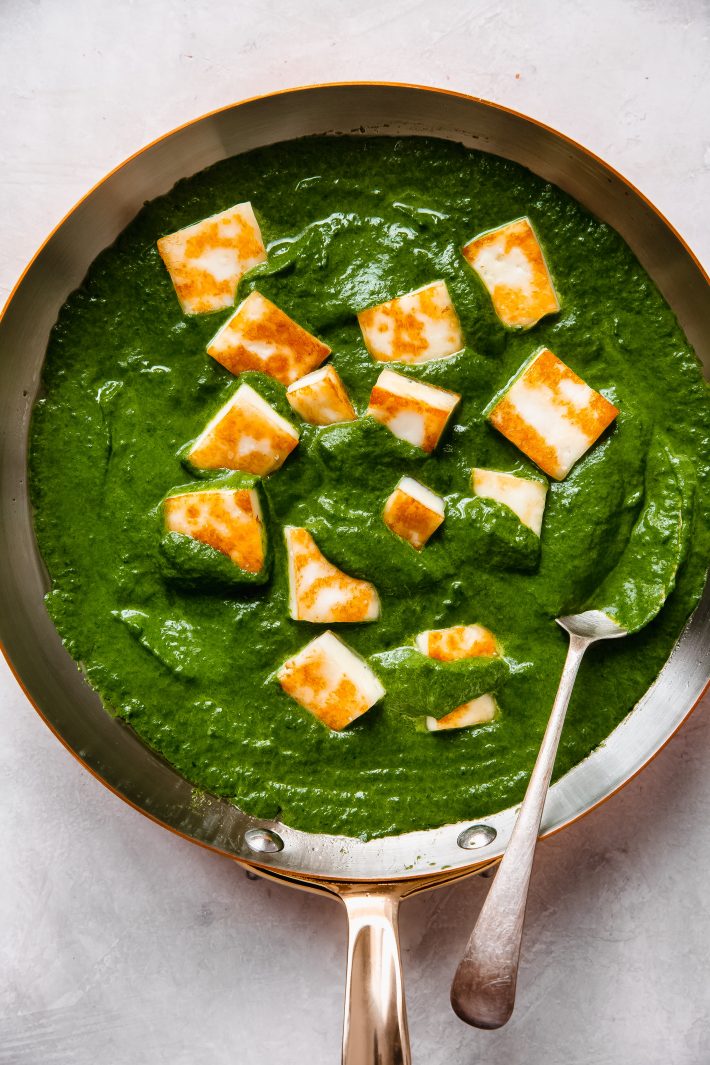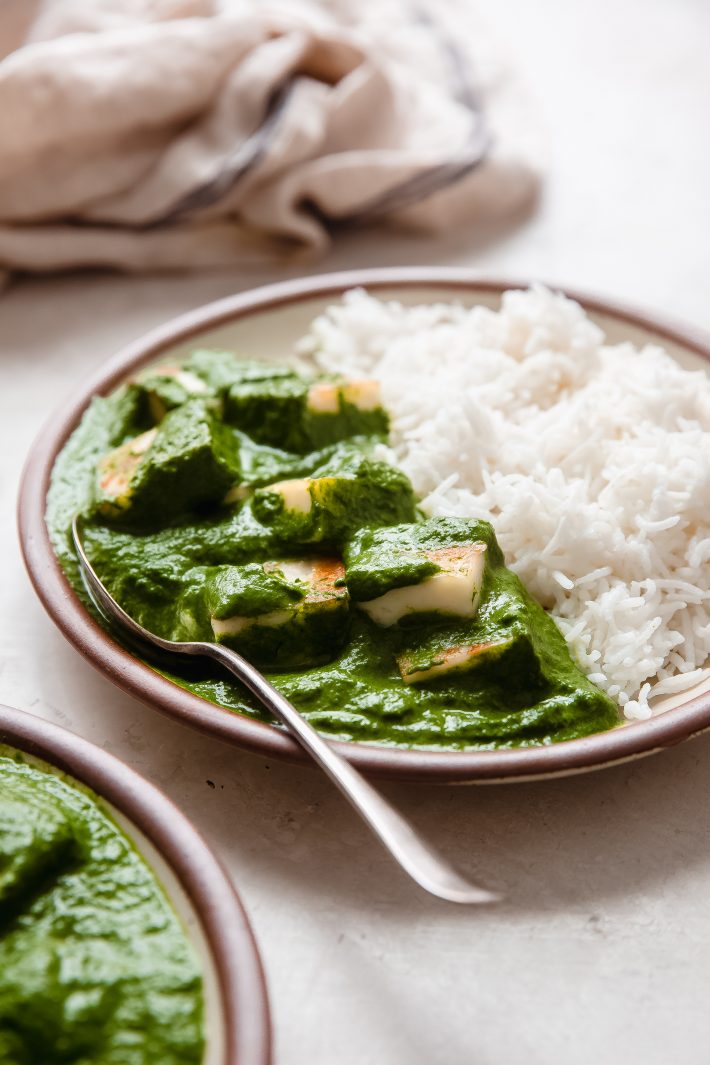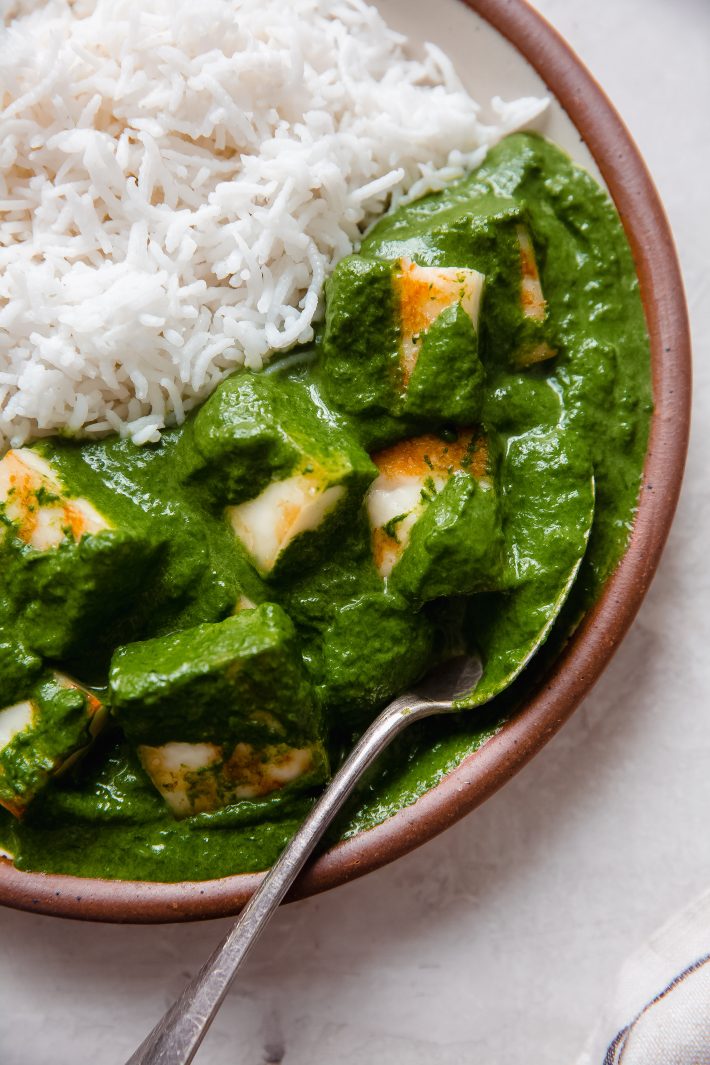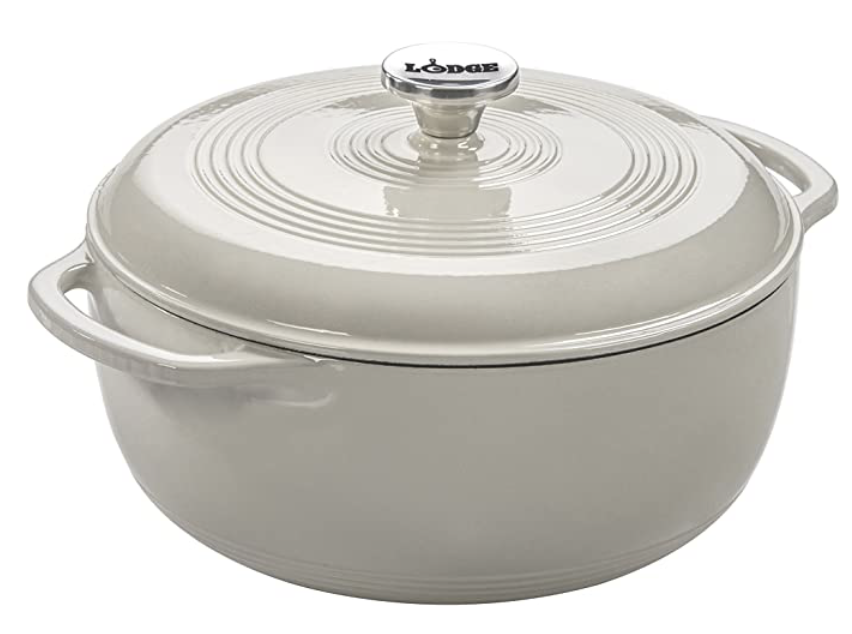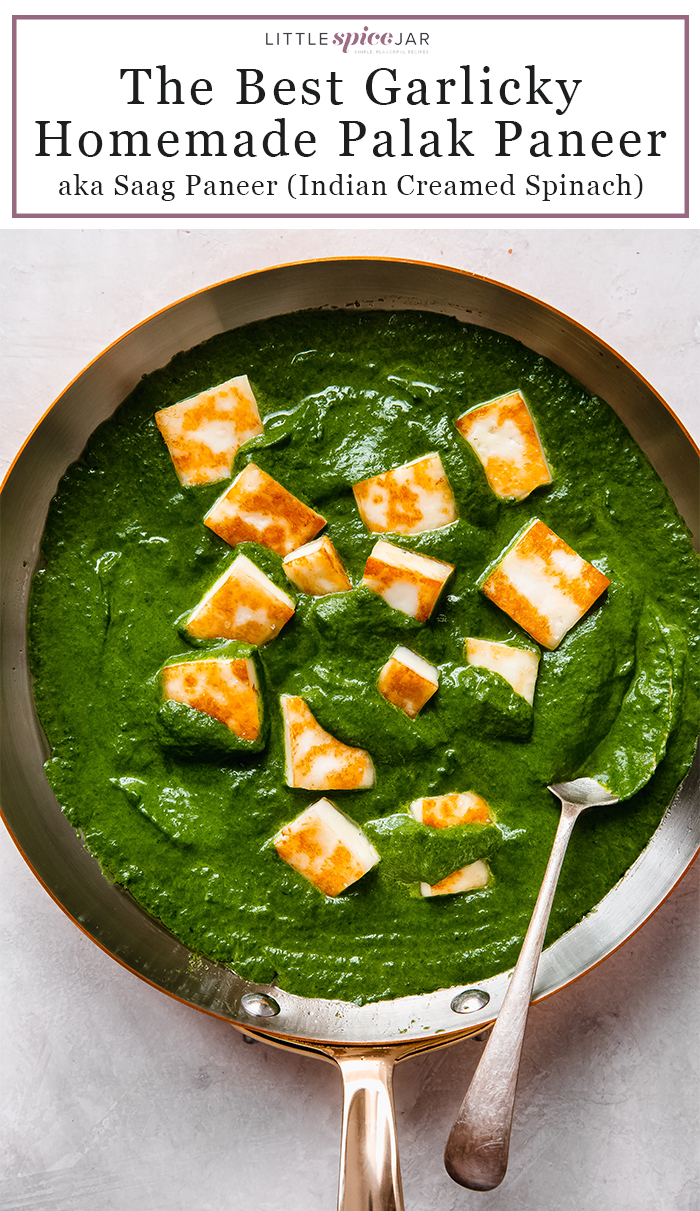Today I bring you a recipe that’s been at least 5 years in the making. There have been several occasions where I’ve wanted to share my palak paneer recipe with you, but for one reason or another, I would hold back and want to do just one more round of recipe testing. There are probably as many ways to make homemade palak paneer as there are Indian restaurants in India. Each family has its own take on it. Each restaurant adds its own twist. Some people use tomatoes; others don’t. Some use grated ginger. Others don’t. Some versions are heavy on the spices, and there are others without much. Some restaurants use a combination of mustard greens and spinach and call it Palak Paneer. Other’s use the same two greens and call it Saag paneer. All of this is to say that there is a wide variety of what’s accepted as Indian pureed greens in a cream sauce. And that’s what I’ve brought you today. Like my homemade butter chicken recipe, it’s one that I make for my family and friends. No promises that this is the best palak paneer you’ll ever have because that’s highly subjective! But it’s one that I consider the best and I often get told that it is. Does that even make sense? Today, I’m glad I finally get to share it with you!
What is Palak Paneer?
Palak paneer is a vegetarian Indian dish consisting of pureed spinach with pan-fried Indian cottage cheese. Directly translated, ‘palak’ means spinach in Hindi, Punjabi, Gujrati, and Urdu (the predominant languages spoken in India and Pakistan.) The word ‘paneer’ means cheese.
What is Paneer?
Paneer is an Indian cottage cheese made from fresh cows (and sometimes buffalo) milk. It’s a cheese that is very mild in flavor and does not melt. Paneer, like most cheeses can be eaten raw as well.
What is the difference between Palak Paneer and Saag Paneer?
Simply put, palak paneer is made from spinach. Saag paneer can be made from a variety of leafy greens, such as, mustard greens, collard greens, or even kale and spinach.
Spinach: I like to use freshly cleaned spinach for this recipe. You could use regular or baby spinach. If you’d like to make saag paneer, you can use any combination of mustard greens, collard greens, kale, and spinach.Paneer: is easily available in most mainstream grocery stores these days. I usually just cut the paneer into small bite-sized pieces.Onions + Garlic: arguably the heart and soul of most Indian recipes. We’re using freshly chopped onions and fresh pressed garlic for this recipe. Serrano peppers: we use serrano peppers when making palak paneer because it’s a type of pepper that’s very easily available. You could also use jalapeño peppers if you’d like. For more heat, swap a pepper for Thai green chilies (bird’s eye.) Herbs + Seasonings: we’ll use dried fenugreek leaves (also known as kasoori methi), fresh dill, ground white pepper, and cayenne for this recipe. If you have an Indian store nearby, you could also use Indian chili powder. The heat level is in the same range as cayenne, so I suggest that as it’s easier to find in all grocery stores.Ghee: Ghee or oil is the most common fat used in homemade Indian food. You could also swap some of the oil for butter if you don’t happen to have ghee on hand.Dairy: We’ll use a bit of whole milk (or 2%) and then finish off the palak paneer with some heavy cream right at the end.
Other Indian recipes you might enjoy:
30-Minute Garlic Brown Lentil DalWeeknight Chana MasalaHomemade Chicken Tikka MasalaFinger Lickin’ Butter Chicken30-Minute Shrimp MasalaLoaded Tandoori Chicken Nachos
For this recipe, you can use baby spinach or regular spinach.To make saag paneer, you would use a combination of spinach, mustard greens, collard greens, and even kale.
